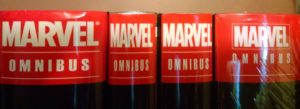 Today I’ve got numbers #35 through 30 of the Most-Wanted Marvel Omnibus secret ballot by TigerEyes. I covered #40-36 in the last installment.
Today I’ve got numbers #35 through 30 of the Most-Wanted Marvel Omnibus secret ballot by TigerEyes. I covered #40-36 in the last installment.
This group of contenders are all returning Top 50 votes from last year’s survey save for one, which weirdly has vaulted onto the survey after being collected for the first time (usually that sort of thing takes the edge off of people’s desire for an omnibus).
Do you own an oversized tome of your favorite character’s comic books? My Marvel Omnibus & Oversized Hardcover Guide is the most comprehensive tool on the web for tracking Marvel’s hugest releases – it features details on every oversize book, including a rundown of contents and if the volume is still readily available for purchase.
Here we go with #35 through 31!
#35. Namor, The Sub-Mariner (1990) by John Byrne
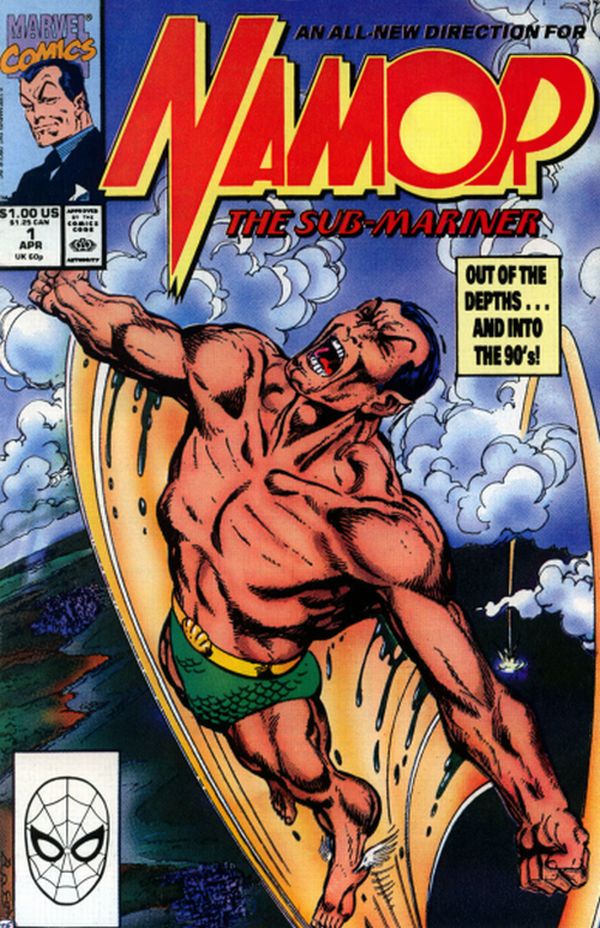 Last Year’s Rank: #36
Last Year’s Rank: #36
Probable contents: Namor, the Sub-Mariner #1-32 (and possibly 33 to complete a story-arc)
What is it? Marvel’s earliest anti-hero re-emerges as a Bruce Wayne style environmental crusader trying to run a business while beating up bad guys – plus, Iron Fist returns to life!
The Details:
John Byrne resurrected Namor in his own starring series in 1990 from a decade-long status as eternal guest-star. Byrne was fresh from writing The Sensation She-Hulk, which he didn’t necessarily want to leave but quit in frustration. (Well, technically he was was fired).
Is this Namor, The Sub-Mariner run She-Hulk-esque? Not in the slightest. Byrne crafts a solid, serious mythology around Namor that respects his lengthy history but grounds Namor in a new status quo as a high-powered businessman rather than an Atlantean king.
He also uses this run as a sort of backdoor pilot to re-introduce Iron Fist after his seeming death a few years prior at the close of Power Man & Iron Fist. I suggest you read a much-more knowledgable and detailed write-up of the run at Comics Should Be Good.
Byrne writes and draws this book to start, adding inks and letters to his credits as he goes. With issue #26 he cedes art duties to a still-developing Jae Lee, whose brutal slashes of black ink cast Namor in a more savage light.
Chances we see this in 2017? ![]() Byrne isn’t necessarily the sure-seller of books as his pair of Fantastic Four omnibuses would suggest – and that run was beloved by a much wider swath of fans than this one. Other Byrne-named books haven’t fared as spectacularly. That’s not a good indicator of a future omnibus when combined with Namor’s lackluster sales power – his last solo series tanked and a Visionaries TPB series of this run couldn’t muster a third volume to complete it. With rumors surfacing last week that Marvel may have the rights to portray Namor onscreen, I think we’d need to see Namor hit the Marvel Cinematic Universe for this to happen anytime soon.
Byrne isn’t necessarily the sure-seller of books as his pair of Fantastic Four omnibuses would suggest – and that run was beloved by a much wider swath of fans than this one. Other Byrne-named books haven’t fared as spectacularly. That’s not a good indicator of a future omnibus when combined with Namor’s lackluster sales power – his last solo series tanked and a Visionaries TPB series of this run couldn’t muster a third volume to complete it. With rumors surfacing last week that Marvel may have the rights to portray Namor onscreen, I think we’d need to see Namor hit the Marvel Cinematic Universe for this to happen anytime soon.
Want to read it right now? Visit my Namor guide for details but – spoiler alert – you’ll only get to issue #18 with published collected editions.
#34. Black Panther (1998) by Christopher Priest, Vol. 1 (of 2)
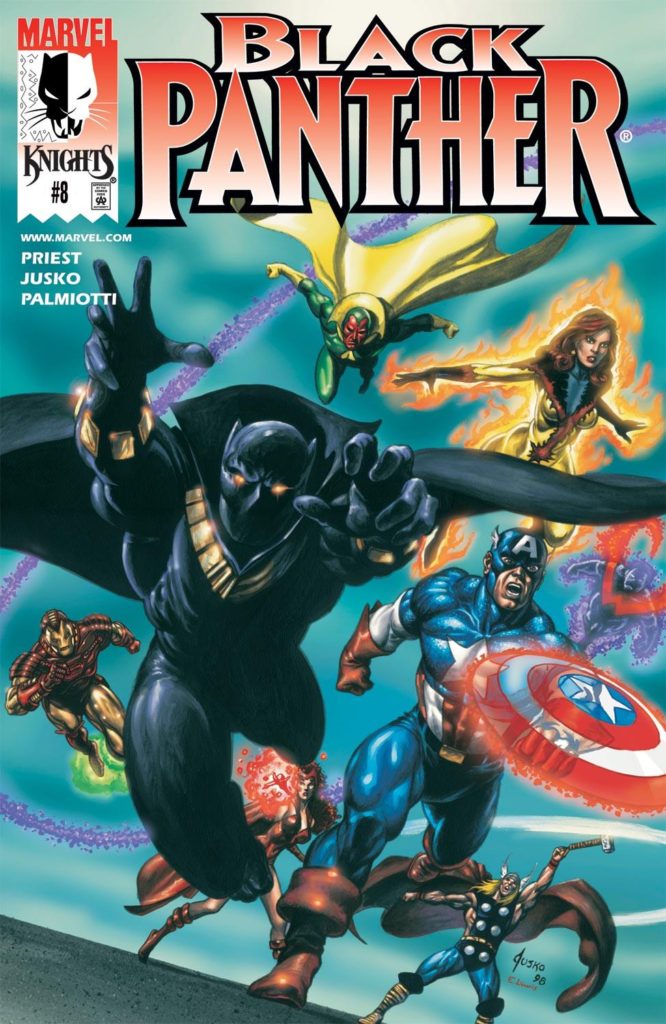 Last Year’s Rank: Debut!
Last Year’s Rank: Debut!
Probable Contents: #1-35 & Deadpool #44
What is it? A high-profile, long-running, universally-acclaimed Black Panther series from the character’s first black writer.
The Details:
The 80s and 90s had relegated Black Panther to a relatively minor character practically in exile. He appeared in just 21 issues from 1980-88, and that includes cameos!
His fates began to improve with the introduction of the anthology title Marvel Comics Presents in 1988. Though it was one quarter a weekly Wolverine vehicle, it also offered other characters who couldn’t sustain their own monthly series a time to shine. After run of stories in MCP bookended by a pair of mini-series gave Panther a brief modern saga of his own, he tumbled back to obscurity except for as a supporting character at the tail end of Fantastic Four.
That’s part of why Christopher Priest 62-issue run on 1998’s Black Panther is such a revelation – he simply hadn’t been seen or used at length in decades. Also, Priest marked the first time a black author scripted T’Challa, though he had long been associated with black artists, from Billy Graham on his original run to Denys Cowan and Dwayne Turner pencilling him in those 1988 and 1991 mini-series, respectively.
Yet, those are all behind-the-scenes facts about this run. It’s also very good comics.
Priest’s initial concept saw T’Challa in America as a foreign diplomat who had no intentions of putting away his superhero mantle while on US soil. It also cycled through a coup in Wakanda, his relationship with the Avengers, international political intrigue between national states, and even the state of being a monarch (and more of those are connected than you might assume).
You can read Priest’s own commentary on the series, which is much more of an advertisement for this run than anything else I can say for it.
Black Panther would remain just as visible in the Marvel Universe from this point forward, but never while being so acclaimed by critics, fans, and general readers alike. At least, not until now, with National Book Award writer Ta-Nehisi Coates’s new run with artist Brian Stelfreeze!
Chances we see this in 2017? ![]() There’s only one reason to downgrade this from a solid 5-star chance with Black Panther’s film on the way: this run is being covered in a quartet of “Complete Collection” trade paperbacks as we speak, with the final volume due out in August. Voters were aware of that and still voted it into the Top 50 for the first time, which says something about the demand for this run in a prestige format. By the time the movie hits the first two volumes will have been on the shelves for two years, which should make run this fair game for collection again. Marvel has waited less time to release omnibuses of recently-collected material.
There’s only one reason to downgrade this from a solid 5-star chance with Black Panther’s film on the way: this run is being covered in a quartet of “Complete Collection” trade paperbacks as we speak, with the final volume due out in August. Voters were aware of that and still voted it into the Top 50 for the first time, which says something about the demand for this run in a prestige format. By the time the movie hits the first two volumes will have been on the shelves for two years, which should make run this fair game for collection again. Marvel has waited less time to release omnibuses of recently-collected material.
Want to read it right now? All you need is Black Panther by Christopher Priest: The Complete Collection Volume 1 and Volume 2, but you can check out my Black Panther guide to see how his other series have been collected.
#33. Daredevil (2011) by Mark Waid, Vol. 1 (of 2)
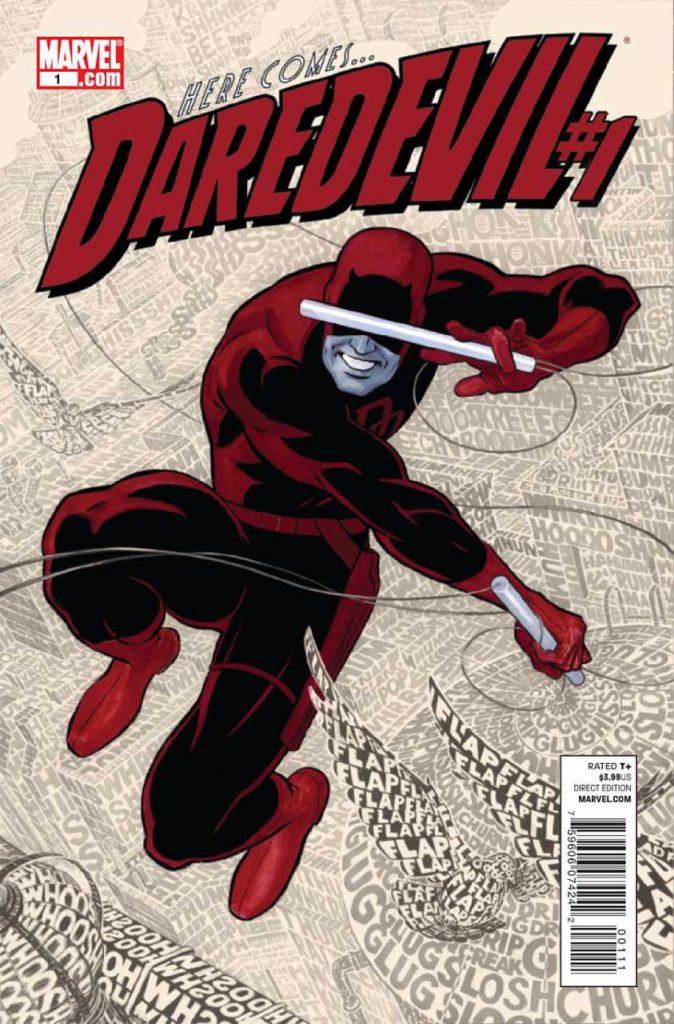 Last Year’s Rank: #39
Last Year’s Rank: #39
Definite Contents: Daredevil, Vol. 3 #1-36 & 10.1, Avenging Spider-Man (2012) #6, The Punisher (2011) #10, Indestructible Hulk #9-10.
(The follow-up Daredevil Vol. 4 #1-18, 1.5, .1, and 15.1 wouldn’t fit – that would make for over 60 issues!)
What is it? A beleaguered Matt Murdock goes happy-go-lucky and decides that being a superhero (and a lawyer) ought to be fun in this multiple Eisner Award winning series.
The Details:
Daredevil has been gritty ever since Frank Miller’s seminal run, but he had never been so grim as in the tail end of the decade-plus he spent under the direction of Kevin Smith, Brian Bendis, Ed Brubaker, and Andy Diggle. The end of Diggle’s run nearly left him as an actual demon during the Shadowland event and every aspect of his life was in shambles.
There was no more grimmer to grim to – Daredevil was the grimmest.
In response, Mark Waid made Daredevil uproariously fun from the opening panels of first issue – maybe for the first time ever. Waid wrote Matt Murdock as someone who had spent so long being emotionally damaged that the only remaining response was to be carefree. This was paired with vivid art from a one-two punch of Paolo Manuel Rivera and Marcos Martin, both of whom portrayed a sort of Silver Era vibe that referenced Ditko. That each artist found inventive new ways to portray the way Daredevil saw the world without sight only added to the sheer delight of consuming every new issue.
Lest you think that everything was sunshine and roses, Daredevil still gets put through the ringer, running afoul of Dr. Doom, exhuming his father’s grave, and running the risk of losing his license to practice law in New York – which doesn’t even mention the worst thing, which is worth the surprise. Despite a slight dip in quality in the final stretch, this is a brilliant self-contained arc for the ages.
And yet… this exact range of issues are already available in a trio of oversized hardcovers, which match both the format and quality of an omnibus – plus another pair to collect the 2014 continuation of the series. Why did so many people cast a vote for this when they could have it right now? Beats me, but Marvel seems to agree with them – series that go from trade to oversized hardcover tend to hit omnibus shortly thereafter.
Chances we see this in 2017? ![]() Marvel has shown they have no problem cannibalizing their oversized hardcover sales with Omnibus volumes when it comes to Marvel Now material. Even if this cheerful Murdock doesn’t align with the Netflix series, both the character and Waid’s name continue to be big draws when it comes to selling books.
Marvel has shown they have no problem cannibalizing their oversized hardcover sales with Omnibus volumes when it comes to Marvel Now material. Even if this cheerful Murdock doesn’t align with the Netflix series, both the character and Waid’s name continue to be big draws when it comes to selling books.
Want to read it right now? You’ve got a few options – swing by the Daredevil Guide to decide on the best one for you, but I can highly recommend you try at least the first collection as a sampler.
#32. Miracleman by The Original Author (AKA Alan Moore, shh, don’t tell)
Last Year’s Rank: #38
Definite Contents: Marvel’s recolored versions of Miracleman as released in Miracleman (2014) #1-16, which represent work originally from Warrior (1982) #1-18 & 20-21 (and elements of those same issues recollected as Miracleman (1985) #1-6), Marvelman Special (1984) #1, Miracleman (1985) #7 & 9-16, and material from A1 (1989) #1. Also, all-new content from Miracleman (2014) Annual 1.
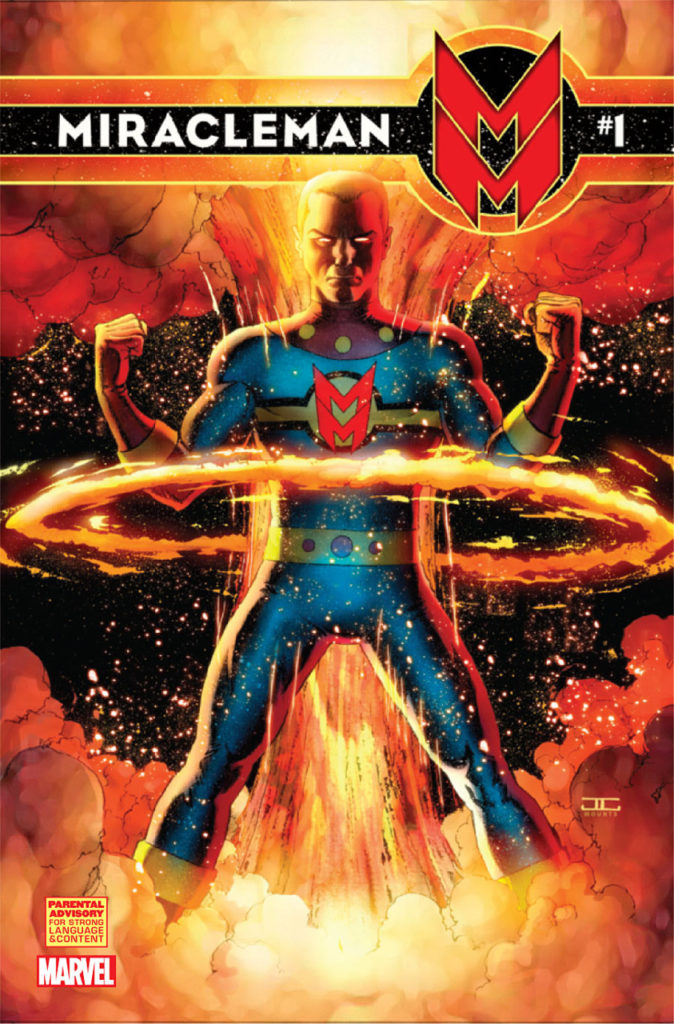 Possible Contents: May also include stories sourced from Marvelman (1954) that were printed as backups in the Marvel run. Those stories originated in issues #25, 27, 32, 34, 41, 65, 72-77, 102, 105, 159, 228 (and possibly more).
Possible Contents: May also include stories sourced from Marvelman (1954) that were printed as backups in the Marvel run. Those stories originated in issues #25, 27, 32, 34, 41, 65, 72-77, 102, 105, 159, 228 (and possibly more).
What is it? The birth of deconstructionist superhero stories turned a little-known Shazam-esque UK character into an comics icon under the pens of Alan Moore and Neil Gaiman in the 1980s.
The Details:
Why is this non-Marvel material debuting close to halfway through a Marvel Omnibus survey? I’ll try for the Cliff Notes, but if you want the longer story check out this incredibly well-maintained history. Since I don’t know this story cold, my version below fills in the blanks with information researched from that page and Wikipedia.
Miracleman debuted as Marvelman in 1954 in the UK, created by Mick Anglo to give the impression that he was still reprinting comics featuring Fawcett’s Captain Marvel after they were sued by DC for being somewhat derivative of Superman. Captain Marvel is a character who we now know as Shazam and who resides in the DC Universe. Marvelman continued publication through 1963 – just past the dawn of the Marvel Comics Silver Age with Fantastic Four in 1961.
(Wow, just that part is complicated.)
Marvelman would be relegated to the memories of older fans if not for Alan Moore. He wrote a deconstructionist version of Marvelman illustrated largely by Alan Davis for the UK magazine Warrior in 1982 that arguably set the mold for all further deconstructed superheroes by the likes of Moore, Gaiman, Morrison, et al. They, too, were sued – but not by DC this time! Since 1954, the then Atlas Comics had transformed to Marvel Comics, who weren’t too keen on a competing hero using their brand name and competing with their own hero of the same name. Thus, in 1985, color reprints of the Warrior stories by Eclipse Comics were re-lettered to refer to their hero as “Miracleman” – the name of the new series. Moore began to create new work with artist Rich Veitch starting with issues #7 & 9, which ended at #16.
With me so far? Good, because you’ll never guess what happened next!
In 1988 Miracleman was picked up by Neil Gaiman with Mark Buckingham (of Fables) on art for a planned 18 further issues. However, Eclipse went bankrupt in 1994, and the series ceased after after 8 of the planned 18 (but not before setting off an early reactionary firestorm to a gay comic character!).
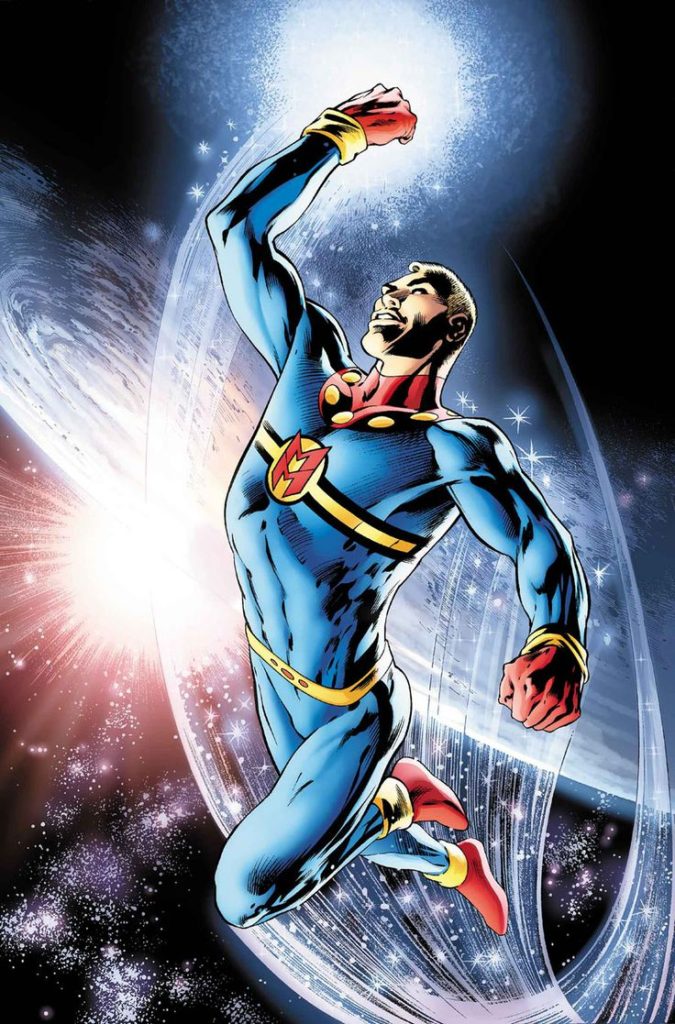 Then, in 1996, Todd McFarlane purchased Eclipses’s assets – including Miracleman. He planned to begin exercising the right, but this exacerbated an existing dispute between McFarlane and Gaiman over characters they created together when Gaiman guested on McFarlane’s Spawn. In a pretty obvious “fuck you” move, Gaiman wrote his 1602 series for Marvel explicitly to fund his legal battle against McFarlane.
Then, in 1996, Todd McFarlane purchased Eclipses’s assets – including Miracleman. He planned to begin exercising the right, but this exacerbated an existing dispute between McFarlane and Gaiman over characters they created together when Gaiman guested on McFarlane’s Spawn. In a pretty obvious “fuck you” move, Gaiman wrote his 1602 series for Marvel explicitly to fund his legal battle against McFarlane.
This later proved moot because (duh) Mick Anglo still held the rights, and Marvel purchased them in 2009 – but, left the character named as Miracleman.
Marvel began to release single-issue reprints (and subsequent premiere hardcovers) of the original Moore series in 2014 with modern recoloring and back-ups of the original Mick Anglo 1950s comics. Marvel reached the end of the Moore material in May 2015. They released the first new MiracleMan material in over twenty years in the form of a 2015 Annual.
That would conceivably be the contents of a first Miracleman omnibus. Hardcovers of this run haven’t been the hottest of sellers, but based on some informal surveying of collectors that’ve because they either (a) have the material already or (b) are holding out for an Omnibus. I fall into the second camp – it’s obvious this will get a deluxe treatment. Also, IDW issued a Miracleman Artifact Edition (2015) collecting the un-recolored Moore run.
Since Marvel has released the first six-issue Gaiman/Buckingham arc, and likely is waiting to cue up new material to release the second. Gaiman has been a bit slow as a comic writer in recent years (to be fair, he’s rather busy with books, TV scripts, and being a new dad), so who knows when we’ll see the second arc and subsequent third.
Chances we see this in 2017? ![]() Marvel clearly has a steady money-making scheme attached to their purchase of this property, and I’m certain that further collections are a part of that regardless of single issue sales. Plus, they’ll need some cash to float them while Gaiman finishes scripting (or, more likely, supervising someone else’s scripting) of the remainder of the material.
Marvel clearly has a steady money-making scheme attached to their purchase of this property, and I’m certain that further collections are a part of that regardless of single issue sales. Plus, they’ll need some cash to float them while Gaiman finishes scripting (or, more likely, supervising someone else’s scripting) of the remainder of the material.
Want to read it right now? That’s not so hard, since Marvel flooded the market with standard-size hardcovers of this recolored run. Grab Miracleman Volume 1, Volume 2, & Volume 3 to catch up.
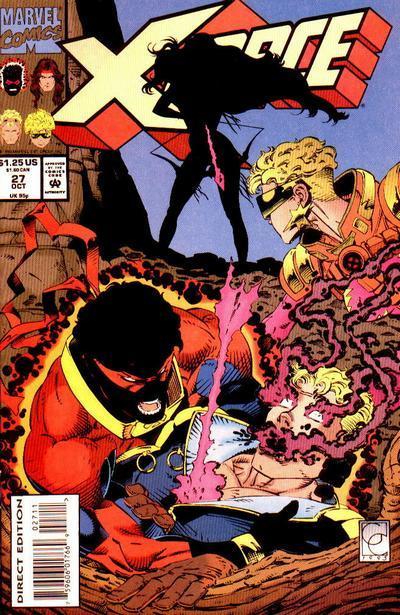 #31. X-Force, Vol. 2
#31. X-Force, Vol. 2
Last Year’s Rank: #44
Probable contents: X-Force #19-43, Annual 2-3, New Warriors #31, Nomad #20, Excalibur #82, X-Factor #106
What is it? The third generation of Marvel mutants try to thwart mutant terrorists and a group of Marvel-style Highlanders after quitting school, all while dealing with their interpersonal drama and an intermittent, time-traveling father figure.
The Details:
X-Force was born out of artist Rob Liefeld’s interest in drawing big guns and endless pouches, but it was writer Fabian Nicieza would drive the series over the course of its first four years. He found a way to create intriguing developments for the characters amidst their hot-headed plotting and banging heads with on-again off-again mentor Cable.
The first X-Force omnibus ends on issue #16 of this 1991 series about young, militarized mutants who feel the ends justify the means. The intervening issues #16-18 are part of the X-Cutioner’s Song crossover, which is collected in its own oversize hardcover.
With their connection to the X-Men definitively severed in the wake of X-Cutioner’s Song and Cable missing in action, the team begins this run adrift but still uncovering more information about their timeswept leader and the Mutant Liberation Front.
His absence doesn’t last long. This was early in Cable’s life as a character, when he was as hot as Wolverine and before too much about him had been revealed. That secret history wasn’t Nicieza’s card to play, but he makes great, soapy villainy out of the MLF as well as the Externals and several other long-running sideplots (including a smattering of Deadpool, in his earliest appearances prior to his 1994 mini).
That this run includes work from a very young Greg Capullo (solid) and Tony Daniel (slightly gawky) doesn’t hurt, nor does the brilliant orange and purple palette that made X-Force covers by far the splashiest of the X-books. Nicieza dug into the middle section of New Mutants to bring back characters like Danielle Moonstar, Magma, Rusty, and Skids. He also made good use of Siryn and Warpath. A brief intersection with the Phalanx Convenant crossover is contained to Excalibur and X-Factor rather than spilling into the core X-books.
Chances we see this in 2017? ![]() Mutant books are sure sellers and thus always in play for re-collection into a new format. However, with Fox headed for a New Mutants film with the original cast of that series rather than a grittier X-Force version, this will have less relevance to the general public.
Mutant books are sure sellers and thus always in play for re-collection into a new format. However, with Fox headed for a New Mutants film with the original cast of that series rather than a grittier X-Force version, this will have less relevance to the general public.
Want to read it right now? This entire run is covered by standard-sized Marvel Premiere Classic hardcovers (with the curious exception of Annual 3). Visit the X-Force guide for issue-by-issue breakouts.
![]()
[…] X-Force, Vol. 2 #32. Miracleman by The Original Author (AKA Alan Moore, shh, don’t tell) #33. Daredevil (2011) by […]